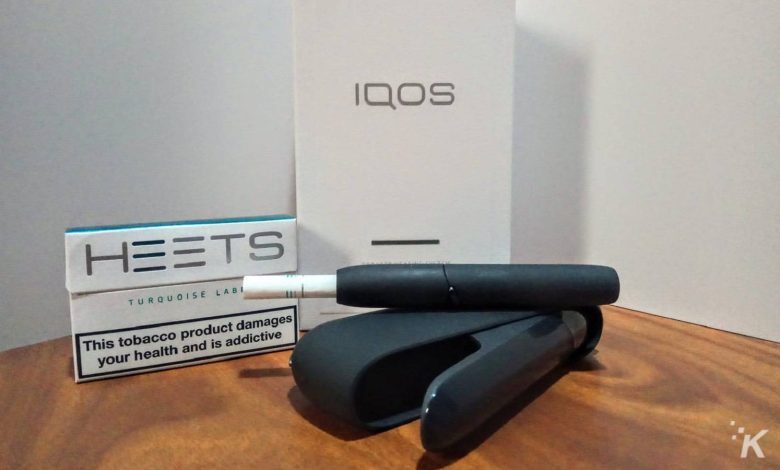ICOs vs. STOs vs. IEOs: Best Investment Practices

- Understanding the differences between ICOs, STOs, and IEOs
- Comparing the risks and benefits of investing in ICOs, STOs, and IEOs
- Key factors to consider when choosing between ICOs, STOs, and IEOs for investment
- Regulatory considerations for ICOs, STOs, and IEOs: What investors need to know
- Case studies: Successful and failed investments in ICOs, STOs, and IEOs
- Tips for maximizing returns and minimizing risks when investing in ICOs, STOs, and IEOs
Understanding the differences between ICOs, STOs, and IEOs
When it comes to investing in the cryptocurrency space, it’s essential to understand the differences between Initial Coin Offerings (ICOs), Security Token Offerings (STOs), and Initial Exchange Offerings (IEOs). Each of these fundraising methods has its unique characteristics and regulatory considerations that investors should be aware of.
ICOs are a popular way for blockchain projects to raise capital by issuing digital tokens to investors. These tokens can represent various things, such as utility within a platform or a stake in the project. However, ICOs have gained a reputation for being high-risk investments due to the lack of regulatory oversight and the prevalence of scams in the space.
On the other hand, STOs are a more regulated form of fundraising that involves issuing tokens that represent ownership in an asset, such as equity in a company or a share of profits. STOs are subject to securities regulations, which can provide investors with more protection and transparency compared to ICOs.
IEOs are a newer form of fundraising that takes place on cryptocurrency exchanges. In an IEO, a project partners with an exchange to conduct the token sale on the platform. This can provide investors with a sense of security, as the exchange has already vetted the project to some extent. However, IEOs still carry risks, and investors should conduct their due diligence before participating.
Comparing the risks and benefits of investing in ICOs, STOs, and IEOs
Investing in Initial Coin Offerings (ICOs), Security Token Offerings (STOs), and Initial Exchange Offerings (IEOs) all come with their own set of risks and benefits. It is crucial for investors to carefully consider these factors before deciding where to allocate their funds.
When comparing the risks and benefits of these different investment options, it is important to note that ICOs are known for their high potential returns but also come with a significant level of risk. Many ICO projects fail to deliver on their promises, leading to investors losing their entire investment. On the other hand, STOs are considered to be more secure as they are backed by tangible assets, offering investors more protection in case the project fails. However, STOs may have lower returns compared to ICOs due to their regulated nature.
IEOs, on the other hand, are a relatively new form of fundraising that takes place on cryptocurrency exchanges. They offer a level of security as the exchange conducts due diligence on behalf of investors. However, IEOs may have limited liquidity and could be subject to market manipulation.
In conclusion, when considering where to invest between ICOs, STOs, and IEOs, investors should weigh the potential returns against the associated risks. ICOs offer high returns but also high risks, STOs provide more security but potentially lower returns, and IEOs offer a level of security but may lack liquidity. It is essential for investors to conduct thorough research and due diligence before making any investment decisions in the cryptocurrency space.
Key factors to consider when choosing between ICOs, STOs, and IEOs for investment
When considering where to invest your money between ICOs, STOs, and IEOs, there are several key factors to take into account. Each of these fundraising methods has its own set of advantages and disadvantages that can impact your investment decision.
One important factor to consider is the regulatory environment surrounding each type of offering. **ICOs** are known for their lack of regulation, which can lead to a higher risk of fraud and scams. On the other hand, **STOs** are subject to more stringent regulations, which can provide investors with a greater sense of security. **IEOs**, being conducted on cryptocurrency exchanges, also offer a level of oversight that can be reassuring to investors.
Another factor to consider is the level of transparency provided by each type of offering. **ICOs** are often criticized for their lack of transparency, which can make it difficult for investors to assess the legitimacy of a project. **STOs**, on the other hand, are required to provide more detailed information to investors, which can help them make more informed decisions. **IEOs** also offer a certain level of transparency, as they are conducted on exchanges that typically have strict listing requirements.
Additionally, it is important to consider the liquidity of the investment. **ICOs** can be illiquid investments, as the tokens may not be tradable on exchanges immediately after the offering. **STOs** and **IEOs**, on the other hand, often provide investors with more immediate liquidity, as the tokens are typically listed on exchanges shortly after the offering.
Ultimately, the decision of where to invest your money between **ICOs**, **STOs**, and **IEOs** will depend on your individual risk tolerance, investment goals, and level of comfort with the regulatory environment. By carefully considering these key factors, you can make a more informed decision that aligns with your investment strategy.
Regulatory considerations for ICOs, STOs, and IEOs: What investors need to know
Investors considering participating in Initial Coin Offerings (ICOs), Security Token Offerings (STOs), or Initial Exchange Offerings (IEOs) must be aware of the regulatory considerations surrounding these fundraising methods. Each type of offering is subject to different regulations, which can impact the level of investor protection and legal compliance.
ICOs, which involve the sale of digital tokens to raise funds for a project, have faced scrutiny from regulators due to the potential for fraud and lack of investor protection. Many countries have implemented regulations to address these concerns, such as requiring ICO issuers to provide detailed disclosures and comply with anti-money laundering (AML) and know your customer (KYC) requirements.
STOs, on the other hand, are considered a more regulated alternative to ICOs as they involve the issuance of tokens that represent ownership in an underlying asset, such as equity or debt. This means that STOs are subject to securities laws, which provide investors with additional protections and require issuers to adhere to strict disclosure requirements.
IEOs are a newer fundraising method where tokens are sold through a cryptocurrency exchange, which acts as a facilitator for the offering. While IEOs can provide a level of due diligence and vetting by the exchange, investors should still be cautious as regulatory oversight may vary depending on the jurisdiction of the exchange.
In conclusion, investors should carefully consider the regulatory environment surrounding ICOs, STOs, and IEOs before deciding to participate in any offering. By understanding the legal requirements and potential risks associated with each type of offering, investors can make more informed decisions and protect themselves from potential scams or legal issues.
Case studies: Successful and failed investments in ICOs, STOs, and IEOs
Investing in Initial Coin Offerings (ICOs), Security Token Offerings (STOs), and Initial Exchange Offerings (IEOs) can be a lucrative opportunity for investors looking to capitalize on the potential of blockchain technology. However, it is essential to conduct thorough research and due diligence before committing funds to any project.
**Successful Investments:**
1. **ICO:** One successful ICO investment was in a decentralized finance (DeFi) project that revolutionized the lending and borrowing industry. The project’s native token saw a significant increase in value due to its utility within the platform, attracting a large user base and driving demand.
2. **STO:** A successful STO investment was made in a real estate tokenization project that offered fractional ownership of high-value properties. The project provided investors with a transparent and secure way to invest in real estate, resulting in steady returns and capital appreciation.
3. **IEO:** An IEO investment in a gaming platform token proved to be successful as the project gained traction among gamers and investors alike. The token’s value surged as the platform grew in popularity, showcasing the potential of IEOs in attracting a targeted audience.
**Failed Investments:**
1. **ICO:** One failed ICO investment was in a project that promised to disrupt the supply chain industry but failed to deliver a viable product. The lack of transparency and a clear roadmap led to a loss of investor confidence, resulting in a sharp decline in the token’s value.
2. **STO:** A failed STO investment was in a renewable energy project that faced regulatory hurdles and technical challenges. Despite initial promises of sustainable returns, the project struggled to overcome obstacles, leading to a loss of investor trust and diminishing returns.
3. **IEO:** An unsuccessful IEO investment was in a social media platform token that failed to attract a substantial user base. The lack of unique features and competition from established platforms hindered the project’s growth, causing the token’s value to stagnate.
In conclusion, successful investments in ICOs, STOs, and IEOs require thorough research, a clear understanding of the project’s fundamentals, and careful risk management. By learning from both successful and failed case studies, investors can make informed decisions and navigate the evolving landscape of blockchain investments effectively.
Tips for maximizing returns and minimizing risks when investing in ICOs, STOs, and IEOs
Investing in ICOs, STOs, and IEOs can be a lucrative opportunity for those looking to diversify their portfolio and potentially earn high returns. However, it is essential to approach these investments with caution to minimize risks and maximize profits. Here are some tips to help you make the most out of your investments in these fundraising methods:
- Conduct thorough research: Before investing in any ICO, STO, or IEO, make sure to research the project, team, and market potential. Look for red flags such as lack of transparency, unrealistic promises, or inexperienced team members.
- Diversify your investments: Instead of putting all your funds into one project, consider diversifying your investments across multiple ICOs, STOs, or IEOs. This can help spread out the risk and increase your chances of success.
- Stay updated on regulations: The regulatory environment for ICOs, STOs, and IEOs is constantly evolving. Stay informed about the latest regulations in your jurisdiction to ensure compliance and avoid legal issues.
- Use secure platforms: When participating in an ICO, STO, or IEO, make sure to use reputable and secure platforms. Avoid sharing sensitive information or sending funds to unknown or unverified sources.
- Set realistic expectations: While investing in ICOs, STOs, and IEOs can be profitable, it is essential to set realistic expectations. Understand that not all projects will succeed, and be prepared for the possibility of losing your investment.
By following these tips and staying informed about the latest trends and developments in the cryptocurrency space, you can increase your chances of success when investing in ICOs, STOs, and IEOs. Remember to always do your due diligence and consult with financial advisors if needed to make informed investment decisions.



